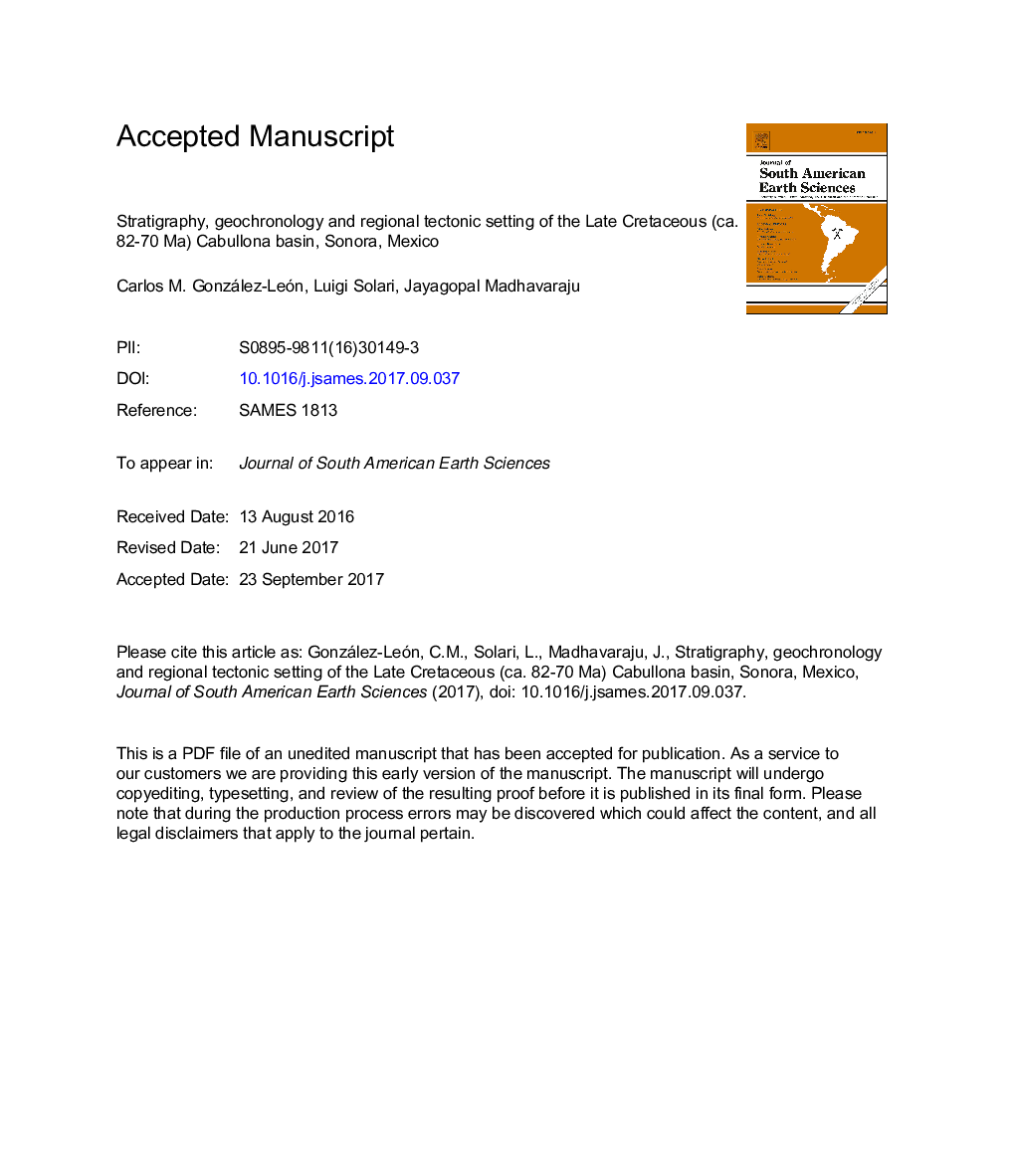| Article ID | Journal | Published Year | Pages | File Type |
|---|---|---|---|---|
| 8907784 | Journal of South American Earth Sciences | 2017 | 69 Pages |
Abstract
The Cabullona basin developed nearly contemporaneous to the early, eastwards migrating Laramide magmatic arc that located to the west of the basin, and to a tectonic shortening that occurred in northern Sonora during Late Cretaceous time. In the older columns of the Cabullona Group and in columns of the northern part, the early arc had a distal influence during sedimentation as shown by interbedded ash fall tuffs and minor rhyolitic flows, but sections in the southern part of the basin record more abundant rhyolitic ash-fall tuffs and flows indicating the arc proximity. An important regional flare-up of the arc at ca. 74 Ma is recorded by the Ejido Ruiz Cortines column, while the upper part of the Cabullona Group was interdigitating with rhyolitic rocks by 70 Ma. The Cabullona basin started to form during the shortening event whose age is constrained between ca. 93 and 76 Ma according to U-Pb ages of the syntectonic Cocóspera Formation of northern Sonora and from Laramide arc rocks that overlie it. Ages and correlation of the Cocóspera and the Altar formations may indicate that a Laramide tectonic front extended from north-central Sonora to the Caborca region and whose trace may correspond to a westward extension of the San Antonio fault.
Related Topics
Physical Sciences and Engineering
Earth and Planetary Sciences
Earth and Planetary Sciences (General)
Authors
Carlos M. González-León, Luigi A. Solari, Jayagopal Madhavaraju,
